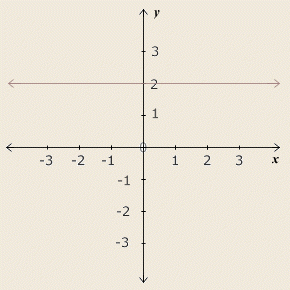The derivative of a function is a measure of its rate of change: how the function value y changes with increasing x. When the function is graphed, the slope of the function indicates its rate of increase.

Above is the simple function y = 2. For every x, it has the value 2. Since the function's value never increases, its derivative is zero. Visually, its graph is a flat line with no slope at all.